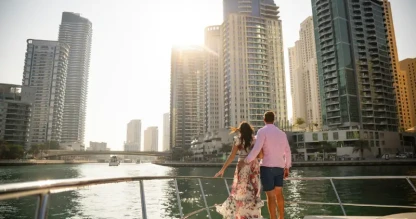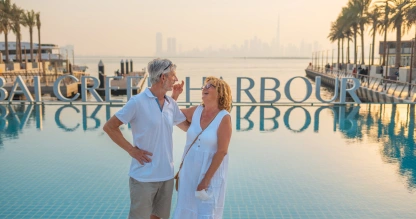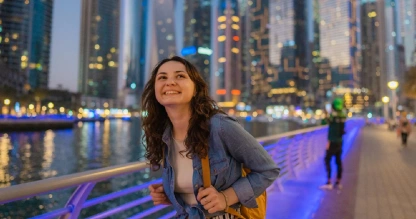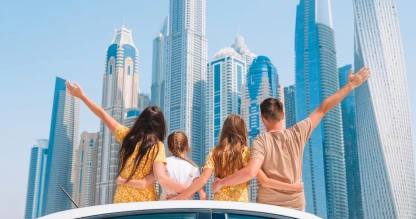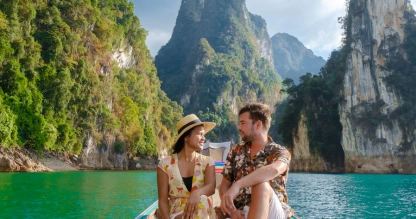
Dubai Creek: From Trading Port to Icon
Dubai Creek serves as the city's historic heart and soul. This natural seawater inlet stretches 14 kilometers that is 100-500 meters wide and naturally separates the city into Bur Dubai and Deira.
The creek has a rich and long history that dates back to 1587 when Venetian pearl merchant Gaspero Balbi described the area's thriving pearling industry. Visitors today can enjoy Dubai Creek's charm in various ways on their Dubai tours. A traditional abra boat ride costs only AED1, while Al Seef celebrates the nation's heritage along 1.8km of creek waterfront. The creek remains a vital commercial link between Dubai and the Gulf region, and it continues to retain both its historic charm and economic significance.
The Origins of Dubai Creek
Dubai Creek became the life-blood of Dubai's formation in 1833. The creek caught the interest of the early settlers because the protected waterway offered a secure, natural harbor well-suited for maritime activities.
How the creek shaped early Dubai
The creek was not just a geographical feature—it truly became the "raison d'être" of Dubai's creation and early growth as a trading port. Dubai Creek's strategic position helped a small fishing village grow into a wealthy trading community in the early 19th century. The creek was a bustling hub of maritime activity by the late 19th century and drew merchants from Persia, India, and East Africa.
Sheik Maktoum bin Hasher made a visionary decision in 1902 by abolishing all import custom duties. Dubai Creek gained popularity as taxes increased in other Arabian Gulf ports. Merchants rushed to Dubai, and it rapidly developed into the re-export hub of the region to nearby ports and hinterland markets.
Pearling and fishing as economic lifelines
The shores of Dubai Creek were alive with this activity, which reached its zenith during the 1920s The creek's warm, shallow waters were full of marine life and supported a thriving fishing industry.
This prosperity didn't last long. The Great Depression of 1929 and the Second World War devastated the pearl trade. Dubai had to diversify its economy and develop new ways of expanding.
The growth of Deira and Bur Dubai
There were three distinct residential quarters that formed along the creek: Deira, Bur Dubai, and Shindagha. Deira became the main commercial district on the east bank, and Bur Dubai formed on the west bank. Shindagha, a small piece of land between the creek and the sea, is where the rulers lived and the primary residential quarter.
Several infrastructure projects improved the creek's potential throughout the decades. Dubai Creek remained the city's only port for about a century during its development. This placed Dubai's trading status at a prominent position in the ancient Mesopotamian–Indus Valley trade route.
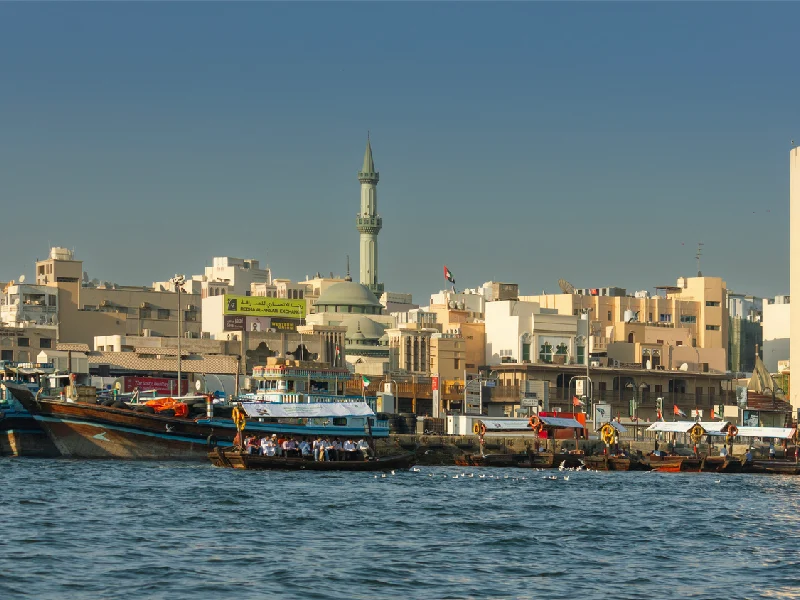
Best Things to Do in Dubai Creek Today
Dubai Creek today presents a combination of historical charm and modern attractions in its iconic waterway. From traditional transport to cultural experiences that make the place stand out, visitors can see it all.
Ride a traditional abra across the water
A trip on a traditional wooden abra costs just AED1 and is one of the most authentic and inexpensive things to do in Dubai. These motorized boats carry around 20 individuals and operate constantly between four creek stations. The five-minute trip offers passengers stunning vistas of ancient structures and modern skyscrapers.
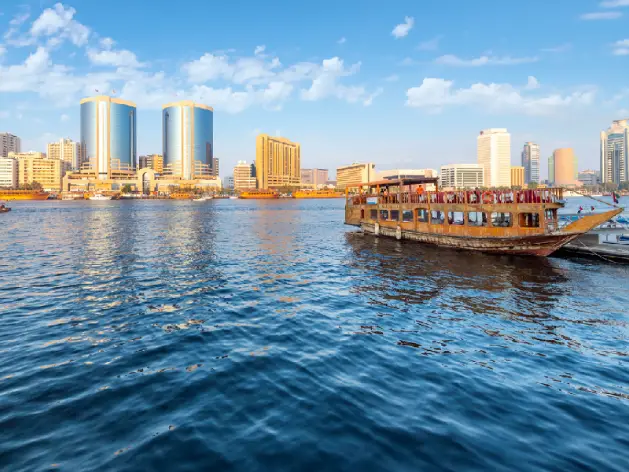
Visit the Gold and Spice Souks
The renowned Gold Souk is located on the north bank of Dubai Creek in Deira with more than 350 vendors. This market handles about 20% of the world's gold supply. A brief walk brings one to the aromatic Spice Souk where traders showcase baskets containing herbs, spices, nuts, and teas. Both souks are open to visitors for free from 10am to 10pm every day.
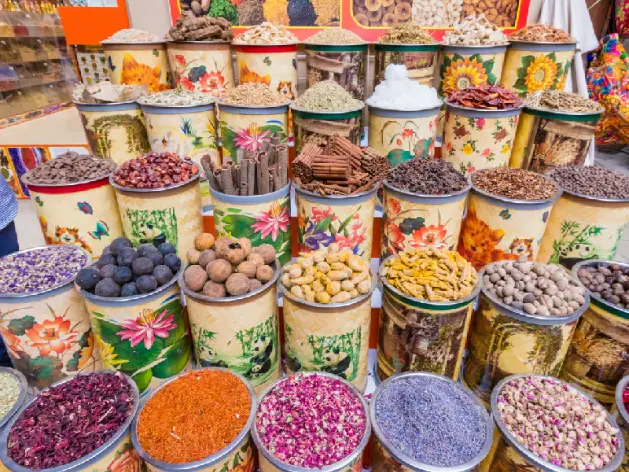
Visit the Dubai Museum and Al Fahidi Fort
Dubai Museum is housed in Al Fahidi Fort, the city's oldest existing building dating back to 1787. Visitors can see colorful dioramas and displays depicting traditional Arab houses, mosques, souks, and date farms. The museum narrates Dubai's history from the earliest times to the present day, with artifacts dating back as far as 3000 BC.
Take a walking tour of Al Bastakiya
Guided walking tours of Al Fahidi (Al Bastakiya) district reveal Dubai's rich past. Visitors explore traditional wind-tower houses, stop at the Coffee Museum, and witness local craft demonstrations. A creek-side boat ride from Bur Dubai to Deira rounds out most tours.
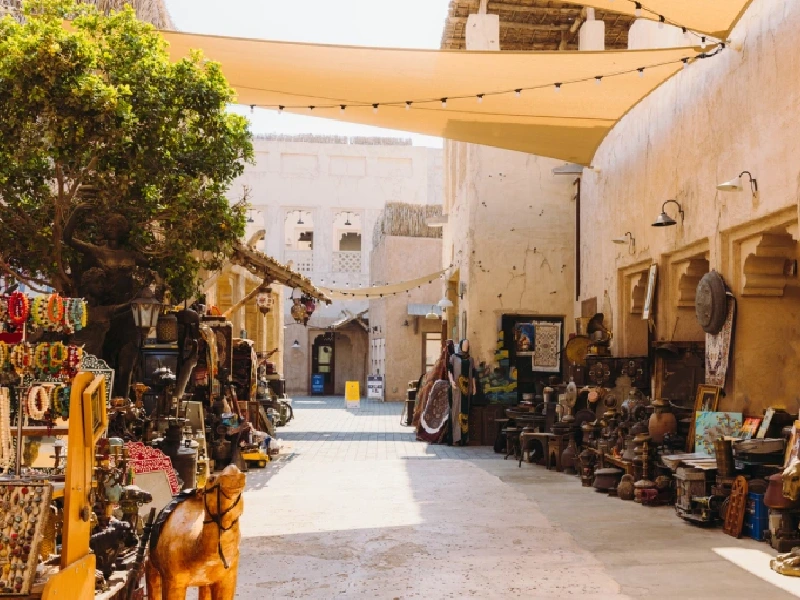
Dine creekside with a view
Dubai Creek restaurants provide world-class dining with stunning waterway views. Award-winning, Western, Mediterranean, Thai, and French restaurants serve cuisine in floor-to-ceiling windowed dining rooms overlooking the water.
Take a Dhow dinner cruise
Dhow dinner cruises on traditional wooden dhows are a Dubai Creek highlight. The two-hour events feature lavish buffets of international and local food. Visitors enjoy live shows like Tanoura dance performances while the lit-up vessel cruises past the city's sparkling skyline.
Cultural Highlights Along the Creek
Dubai Creek's old shores are full of old buildings and culture that give you a peek at what life was like in the United Arab Emirates way back. You can really see how creative people were, making amazing art even when living in tough desert conditions.
Wind Towers in Old Home
If you walk around the oldest parts of Dubai, you'll see these tall wind towers – they're like the old-school version of air conditioning. Back then, how many towers a house had showed how fancy it was. These towers are built to pull in breezes from all directions, keeping the house cool no matter which way the wind blows.
In the morning they grab eastern winds, northern at noon, western in the afternoon, and southern in the evening. These towers weren't just for keeping cool; they became a status symbol in Dubai.
Preserved heritage in Shindagha and Al Seef
Al Shindagha Museum is the biggest history museum in the UAE, connecting the past and present of Dubai. You can check out exhibits like Emerging City, which shows how Dubai grew from a small fishing spot into a huge city.
Another one, Culture of the Sea, tells all about Dubai's history with the sea. The area is also filled with old houses made of coral, stone, and wood. Since the 1980s, they have been saving these old houses.

Local Crafts and Stories
At Dubai Heritage Village, people show how to make old-fashioned Emirati crafts and share stories from the past. The Perfume House teaches you about perfume-making and why it was so important for trading back then.
You can also see shows about pearl divers' songs and folk tales. If you want to try it yourself, there are workshops where you can make pottery and try Al Sadu weaving, which is a special Bedouin skill that UNESCO says is really important.
How Dubai Creek Connects the Old and New
Dubai Creek has great infrastructure, bridges that show how it connects Dubai's trading history with its future plans. The creek has bridges that make it easy to get around, and more are planned. The Dubai Metro even has a stop at Dubai Creek, connecting it to the city's modern transportation.
Modern infrastructure around the creek
Dubai Creek Harbor is set to open soon. It will feature the Dubai Creek Tower, which they hope will be the tallest building. Also, the Dubai Water Canal, finished a while back, made the creek longer and linked it to newer parts of Dubai.
Tourism and Saving Old Buildings
The Al Seef project shows a good way that old and new things can exist together. They spent money to keep Dubai's history alive and bring in tourists. The project fixes up an area along the creek and adds walking space. You can also take a dhow cruise, which is a relaxing trip on the water with views of both old buildings and new skyscrapers.
Why the Creek Still Matters
Even though Dubai has built bigger ports, the creek is still important for trading in the area. It shows how Dubai changed from a small pearling village into a big, important city, and it's still a key part of the city today.
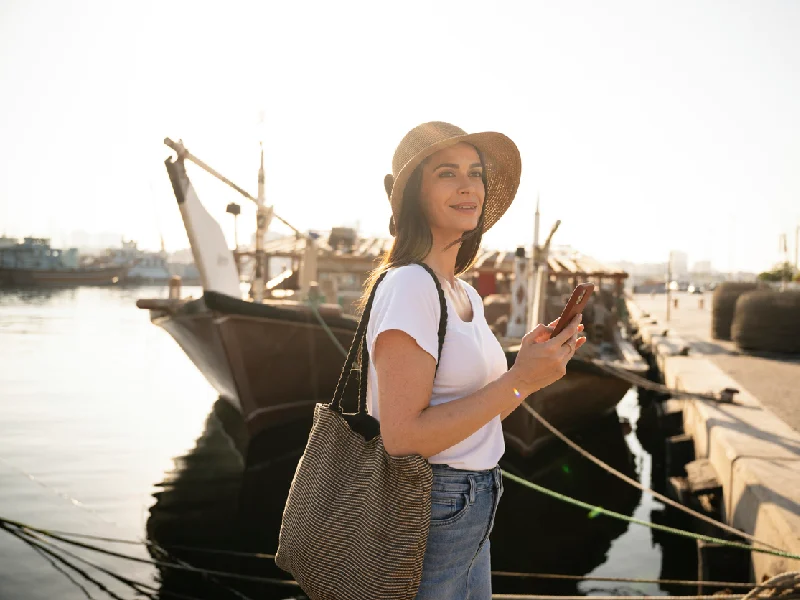
FAQS
Q1. What is special about Dubai Creek?
Dubai Creek is the city’s historic heart and former lifeline for trade, where merchants once exchanged goods from across the world. Today, traditional wooden dhows still sail its waters alongside modern boats, creating a unique blend of old and new.
Q2. What can you do at Dubai Creek?
You can enjoy a scenic abra ride across the water, wander through bustling souks filled with spices, gold, and textiles, visit heritage museums, and dine at waterfront restaurants while soaking in panoramic views of the city.
Q3. When to visit Dubai Creek?
The best time to visit is in the late afternoon or early evening, when the temperatures are cooler. As night falls, the illuminated skyline reflects beautifully on the water, creating a magical atmosphere.
Q4. Can you walk along Dubai Creek?
Yes, both sides of Dubai Creek have scenic promenades lined with shops, cafes, and cultural landmarks. It’s perfect for a leisurely stroll, photography, or simply watching the boats pass by.
Discover the wonders of Dubai with our Dubai Tours and the best of Middle East trips!

